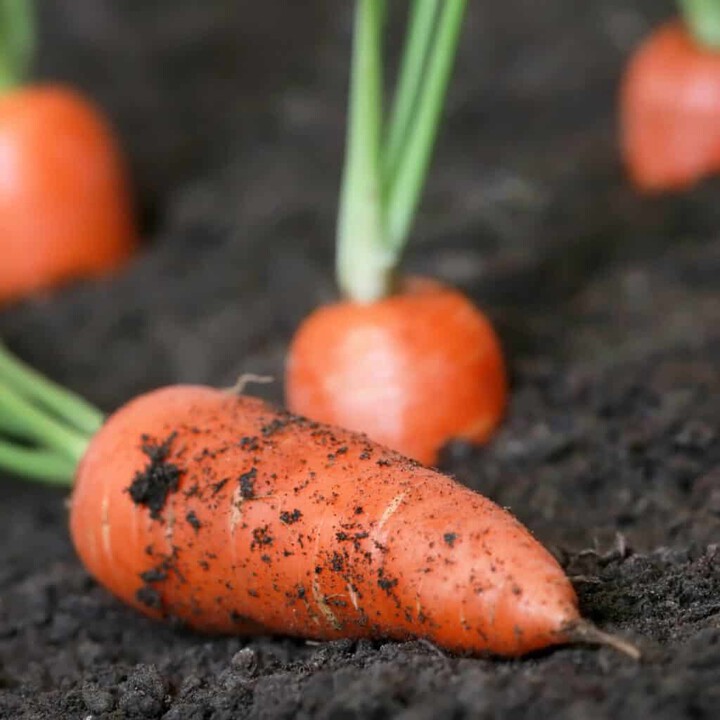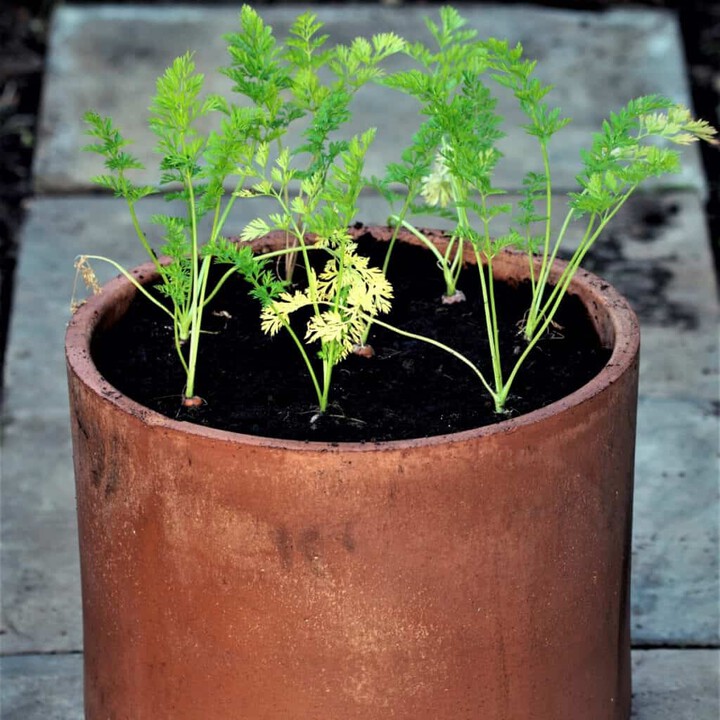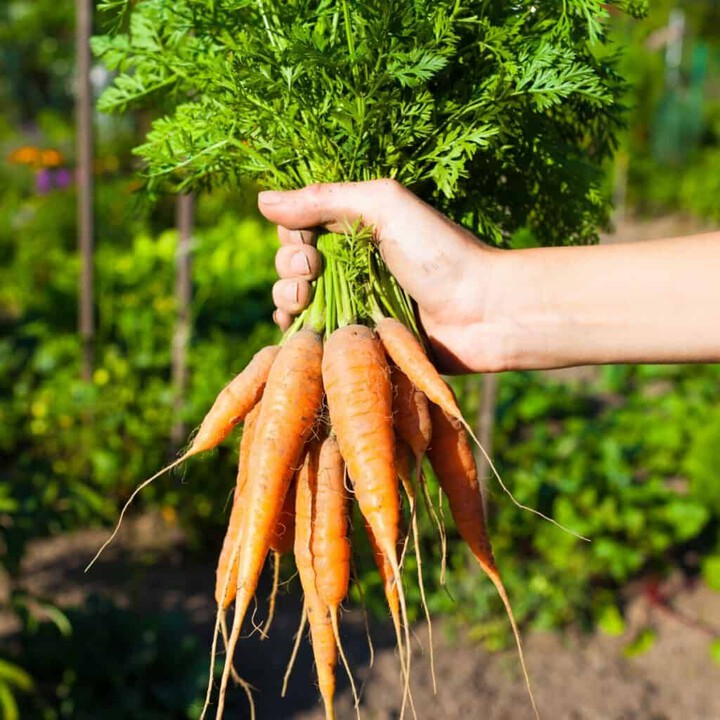If you are new to gardening or lack space for an outdoor garden, you should seriously consider growing carrots. Carrots are fairly easy to grow, can be grown indoors, taste great and are used in a wide variety of dishes.
Under ideal water and temperature conditions, carrots seeds are likely to start sprouting within 14 to 17 days from planting.
Upon sprouting, it can take anywhere between 60 and 75 days for the vegetable to grow and be ready for picking. Resist the urge to harvest them early to get the best quality veggies
You can grow some truly beautiful and delicious carrots from your kitchen garden, also known as a potager.
The best part is you won’t have to invest an abundance of time and effort to grow carrots in your kitchen. Without further ado, let’s take a look at how to grow carrots in your kitchen garden.

HOW TO GROW CARROTS SUCCESSFULLY AT HOME
Be especially mindful of the amount of sunlight your carrots receive. Your carrots should receive a minimum of eight hours of light per day.
Furthermore, you should use fertile soil that is properly drained. Potting soil mix used for regular vegetables will suffice.
GROWING IN CONTAINERS
The pot should be one quart in size, ensuring there is ample room for your carrots to grow. Provide your growing carrots with light, water and nutrition and you might be able to pick them year-round.
This is your opportunity to grow and eat delicious carrots throughout the entirety of the winter, fall and beyond.
The most important things to consider are that your carrots are provided with sufficient light, water and nutrients.
Provide your carrots with the proper conditions and they will grow long and taste amazing regardless of the time of the year.
However, with that said, it is worth noting that carrots are considered to be biennial vegetables. Carrots are commonly harvested in the first year after they are planted, typically prior to overwintering and setting flowers in the ensuing year.

HOW LONG DOES IT TAKE FOR CARROTS TO GROW FROM SEED?
You can successfully plant and grow carrots from seedlings grown in nurseries. However, it is much more common to sow the carrot seeds directly into your kitchen garden.
It typically takes carrot seeds between 10 and 21 days to germinate. The period from the point of seeding to harvesting is usually between 50 days and 80 days.
HOW DEEP DO CARROTS NEED TO GROW?
The typical carrot root is around an inch in diameter. Most carrot roots are between an inches and 12 inches in length.
Though most people picture orange roots, the truth is carrots are available in a wide variety of colors including white, purple and yellow.
WHAT CAN I PLANT NEXT TO CARROTS?
Some of the best companion vegetables to grow alongside carrots include tomatoes, peppers, onions, lettuce, peas and beans.
Growing rosemary next to carrots reduces the chances of carrot flies wreaking havoc on your crop. And many home gardeners insist growing chives next to carrots enhances their flavor.
HOW MANY CARROTS DO YOU GET FROM ONE PLANT?
One carrot seeds grows a single carrot.
So be sure to space out your carrots at least an inch or two apart to guarantee each that emerges from the respective seeds has enough room to grow without interference.

TEMPERATURES
Carrots can be grown outdoors and indoors. Such biennials are grown in all different types of climates. Carrots are often planted as a winter crop or late fall crop in parts of the globe where temperatures are comparably warm.
Ideally, carrots will be grown when the temperature is at 55 degrees or higher. The nighttime temperatures should not drop below this point or the carrots might be in danger of stunted growth or no growth at all.
Carrots grow best when exposed to daytime temperatures at or around 75 degrees.
MOISTURE AND LIGHT
Sufficient UV light is necessary to grow high-quality carrots indoors. Even if your carrots are positioned by an expansive window, there is still a good chance they will struggle to grow without sufficient light.
This is precisely why your carrots will require UV light. The grow light should be on your carrots for a minimum of eight hours per day. Do not hesitate to operate your UV light for this amount of time as it won’t chew up electricity.
Aside from light, moisture also matters a great deal in your quest to grow tasty carrots that are long, of the proper texture and visually striking.
There is a risk that your kitchen container garden will not be able to sustain an adequate amount of water throughout the carrots’ growth period.
The bottom line is soil within indoor pots is likely to dry out sooner than would occur outdoors. This is precisely why you should be mindful of your carrots’ moisture level.
Make sure your carrots have adequate moisture and they will have a legitimate chance to grow to their potential. However, this is not to say you should provide your carrots with an excess of water.
If there is too much water in the pot, it will create the potential for rot and mildew. If you find your pots have too much water, consider putting stones along the container bottom so the water can drain sufficiently.

HARVESTING
The point in time when you harvest your carrots hinges on the variety grown. In general, it typically takes between 50 days and 80 days from seed to harvest carrots.
If you reach this range and find the tops of the carrot plants have sufficiently filled out to the diameter you expected, it is time to harvest them. You can check this diameter by moving your hands slightly below the soil line.
However, the only way to be sure that your carrots are ready to harvest is to lift them out of the dirt. The problem with harvesting too soon is that they will taste bland as opposed to sweet.
Just be sure that you don’t end up stabbing the carrots when you loosen the soil prior to harvesting. Twist the carrots and pull them out of the soil.
Take off the leaves soon after harvesting. If you were to leave the leaves on, they would pull moisture and energy directly from the roots, causing them to become limp and ultimately taste less sweet.